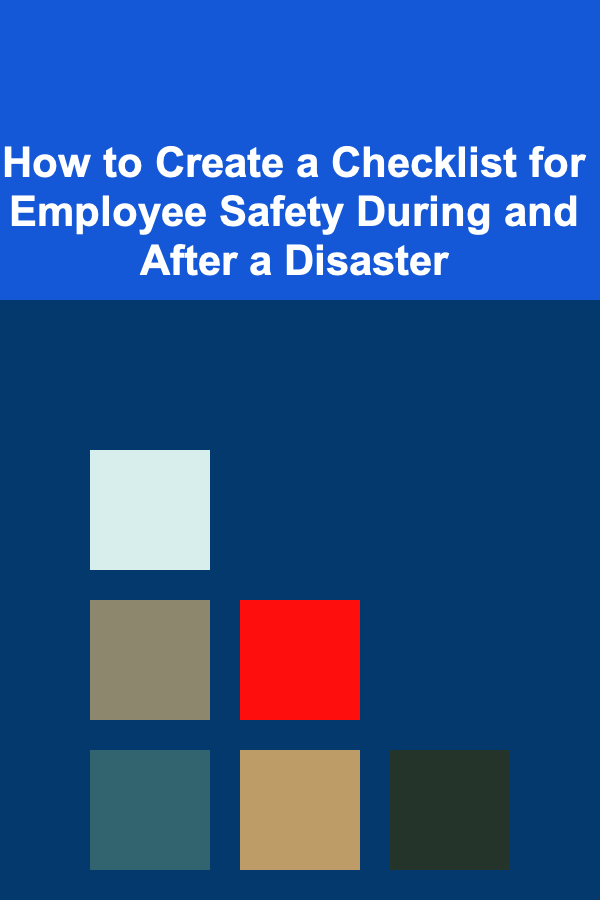
How to Plan a Successful Snowboard Instructor Season
ebook include PDF & Audio bundle (Micro Guide)
$12.99$6.99
Limited Time Offer! Order within the next:

Snowboarding is an exhilarating and rewarding sport that not only challenges the body but also allows people to connect with nature in a unique way. For those who have mastered the basics of snowboarding and want to take their passion to the next level, becoming a snowboard instructor is an enticing option. Whether you're looking to teach as a full-time career or as a seasonal job, planning a successful snowboard instructor season requires a combination of preparation, skill development, and effective career management.
In this article, we'll guide you through the essential steps to ensure a rewarding and successful season as a snowboard instructor, from obtaining the right qualifications to securing a position at a reputable resort. We'll explore practical tips for professional growth, managing a balanced lifestyle during the season, and making the most of your time on the mountain.
Step 1: Getting the Right Qualifications and Certifications
Before you can start teaching, it's crucial to have the appropriate qualifications and certifications. The process of becoming a certified snowboard instructor varies by country, but most resorts and programs around the world require certification from a recognized body, which ensures a high standard of instruction and safety.
1.1. Understand the Certification Requirements
The most common snowboarding instructor certification systems include:
- American Snowboarding Instructors (PSIA-AASI): The Professional Ski Instructors of America-American Association of Snowboard Instructors offers a comprehensive certification path that includes multiple levels of qualifications (Level 1, Level 2, and Level 3). This is a widely recognized certification in the United States and many other countries.
- Canadian Ski Instructors Alliance (CSIA): In Canada, the CSIA offers certification programs for snowboard instructors. The CSIA is known for its internationally recognized standards and offers training in all aspects of snowboarding.
- British Association of Snowsport Instructors (BASI): In the UK, BASI provides certification for instructors, offering levels 1 and 2 for beginners, and Level 3 for those looking to specialize in more advanced teaching.
- International Ski Instructors Association (ISIA): ISIA certification is often required for more experienced instructors and is accepted in many European countries.
1.2. Enroll in a Certification Course
Once you've selected the certification body that aligns with your desired career path, you'll need to complete a certification course. These courses usually consist of several days of training and assessments, which test your ability to ride proficiently, your knowledge of teaching techniques, and your understanding of safety protocols. It's a good idea to invest time in practice and honing your skills before attending the course, as it can be quite intensive.
1.3. Gain Teaching Experience
Before seeking a teaching position, it's beneficial to gain some experience in instructing others, even if it's informal. This could involve volunteering at local resorts, teaching friends or family members, or shadowing a professional instructor. The more teaching experience you have, the more confident you'll be when it comes time to take on your own students.
Step 2: Selecting the Right Resort
Choosing the right resort is one of the most critical factors for a successful snowboard instructor season. You'll want to find a resort that offers great opportunities for career growth, a supportive work environment, and a good work-life balance. When selecting a resort, there are several factors to consider:
2.1. Reputation and Location
The best resorts for snowboard instructors tend to be those with a strong reputation in the snow sports industry, offering high-quality facilities, excellent snow conditions, and a large volume of international visitors. Look for resorts in prime locations, such as the Alps in Europe, North America's Rockies, or Japan's famous powder-filled slopes.
2.2. Seasonal Opportunities and Instructor Demand
Certain resorts have a higher demand for snowboard instructors during peak seasons, particularly around the holidays and spring break. It's essential to research the demand for snowboard instructors at different resorts and the length of the season, as some resorts may only operate during a short period (e.g., winter months), while others offer more extended employment opportunities. Resorts that attract a diverse clientele may provide better chances for instruction jobs.
2.3. Resort Size and Work Environment
The size of the resort can influence your teaching experience. Larger resorts may offer more job opportunities and have a greater number of students, but they can also be more competitive. Smaller, boutique resorts may offer a more intimate work environment with more direct interaction with students, but there may be fewer opportunities for career advancement. Consider the type of environment in which you'd feel most comfortable and productive.
2.4. Instructor Training Programs
Many resorts offer instructor training programs that provide a pathway to certification and employment. These programs often include on-the-job experience and mentoring. If you're a newer instructor, working at a resort with an established training program will give you the chance to build your skills in a professional setting.
2.5. Compensation and Benefits
Research the salary range for snowboard instructors at various resorts. While some resorts offer competitive wages, others might provide more minimal pay but compensate with perks such as free lift passes, accommodations, food, and gear discounts. Ensure that the compensation package aligns with your financial needs and lifestyle.
Step 3: Preparing for the Season
Once you've secured a job as a snowboard instructor, it's time to prepare for the season. Proper preparation ensures that you're physically and mentally ready for the demands of teaching and living in a mountain resort environment.
3.1. Physical Fitness and Conditioning
Teaching snowboarding requires stamina, agility, and physical fitness. Snowboard instructors are constantly on the move, demonstrating techniques, riding on challenging terrain, and sometimes spending long hours in cold weather. Prepare by focusing on core strength, flexibility, and leg endurance through exercises like squats, lunges, and yoga. Make sure you're in good shape before the season begins.
3.2. Review Your Snowboarding Techniques
Even though you're a skilled snowboarder, the technical aspects of snowboarding may be different when you're teaching. Ensure that your riding skills are polished and that you're comfortable riding on various terrain, including difficult slopes. Spend time on the mountain practicing your turns, jumps, and tricks to ensure that you're prepared to demonstrate techniques to students of varying skill levels.
3.3. Learn About the Resort's Facilities and Policies
Familiarize yourself with the resort's policies, including safety protocols, guest services, and the equipment used for lessons. Many resorts use specific teaching methods, so learning these approaches will help you integrate into the team. Understanding the resort's culture, local customs, and terrain will make you a better instructor and provide a more enjoyable experience for your students.
3.4. Gear Up for the Season
Having the right gear is essential for a snowboard instructor. Ensure you have high-quality snowboarding equipment, including boots, bindings, and a reliable snowboard that matches your teaching needs. In addition to your snowboarding gear, make sure you have warm, weather-appropriate clothing, as well as gear for off-the-slope activities (e.g., comfortable boots, jackets, gloves, and winter accessories).
Step 4: Managing Your Schedule and Lifestyle During the Season
Snowboard instructor seasons can be intense, with long hours spent on the slopes and little downtime. It's essential to manage your schedule effectively and maintain a healthy work-life balance.
4.1. Set Realistic Goals for Your Teaching
As a snowboard instructor, you may be teaching a variety of students with different abilities. Set clear teaching goals for yourself, such as improving students' confidence, refining techniques, or introducing new concepts to advanced riders. Constantly challenge yourself to improve your skills as an instructor by seeking feedback and making adjustments.
4.2. Maintain a Healthy Work-Life Balance
It's easy to get caught up in the hustle of the busy resort season, but maintaining a healthy work-life balance is essential for your well-being. Schedule time off to rest and recharge, and explore the resort's non-snowboarding activities, such as hiking, spa visits, or social events with fellow instructors. Socializing with others in the community can help you combat any feelings of isolation during the season.
4.3. Stay Professional and Communicate Effectively
Communication is a key component of being an effective instructor. Be clear and concise with your students, providing easy-to-follow instructions and feedback. Also, maintaining a professional attitude and demeanor is crucial for building trust with your students. Being approachable and friendly while maintaining discipline will ensure your students have an enjoyable and educational experience.
Step 5: Reflecting on Your Season and Planning for the Future
At the end of the season, take the time to reflect on your experiences and growth. Whether you've had a successful season or faced challenges, reviewing your performance will help you improve as an instructor for future seasons.
5.1. Review Your Teaching Successes and Challenges
Reflect on what went well during your lessons, as well as areas where you struggled. Understanding your strengths and weaknesses will guide your development as a snowboard instructor. If you faced challenges, think about how you can improve your approach next season, whether it's learning new teaching methods or refining your snowboarding skills.
5.2. Seek Feedback from Students and Supervisors
Feedback is invaluable for improvement. Ask students, fellow instructors, and your supervisors for constructive criticism about your teaching style, effectiveness, and attitude. This feedback will help you refine your skills and prepare for the next season.
5.3. Plan for the Next Season
If you're looking to make snowboarding instructing a longer-term career, consider additional certifications, courses, or professional development opportunities to continue building your skills. Planning for your next season ensures you're always progressing and learning in the snowboarding industry.
Conclusion
A successful snowboard instructor season is a combination of preparation, commitment, and professional growth. By obtaining the right qualifications, selecting the best resort for your career goals, and maintaining physical fitness, you can ensure a successful season on the slopes. Along the way, don't forget to enjoy the journey, stay passionate about snowboarding, and most importantly, share your love of the sport with others, helping them experience the thrill of the mountain as you did.
Reading More From Our Other Websites
- [Home Security 101] How to Strengthen Cybersecurity for Your Router and Protect Your Home Network
- [Home Family Activity 101] How to Plan Fun Water Balloon Games for the Backyard
- [Organization Tip 101] How to Use a Time Capsule to Document Personal Growth
- [Weaving Tip 101] How to Design and Weave Custom Braided Handles for Culinary Knots
- [Biking 101] Exploring New Cities with Bike Rentals: A Convenient Travel Guide
- [Home Budget Decorating 101] How to Decorate with Mirrors: Smart & Stylish Ways to Enlarge Any Room on a Budget
- [Home Pet Care 101] How to Set Up a Comfortable Pet Sleeping Area
- [Home Security 101] How to Lock Down Your Home's Electrical and Plumbing Systems for Safety
- [Home Budget 101] How to Create a Comprehensive Home Budget: A Beginner's Guide
- [Personal Care Tips 101] How to Optimize Your Sleep for Radiant Skin: The Ultimate Personal Care Guide

How to Create a Checklist for Employee Safety During and After a Disaster
Read More
How to Make a Job Interview Checklist for Preparing Your Resume and Cover Letter
Read More
How to Prevent Package Theft at Your Front Door
Read More
The Art of Execution: How to Stand Out by Delivering Results
Read More
How to Understand Your Credit Card Statement's Fine Print
Read More
10 Tips for Creating an Exam Study Planner That Actually Works
Read MoreOther Products

How to Create a Checklist for Employee Safety During and After a Disaster
Read More
How to Make a Job Interview Checklist for Preparing Your Resume and Cover Letter
Read More
How to Prevent Package Theft at Your Front Door
Read More
The Art of Execution: How to Stand Out by Delivering Results
Read More
How to Understand Your Credit Card Statement's Fine Print
Read More